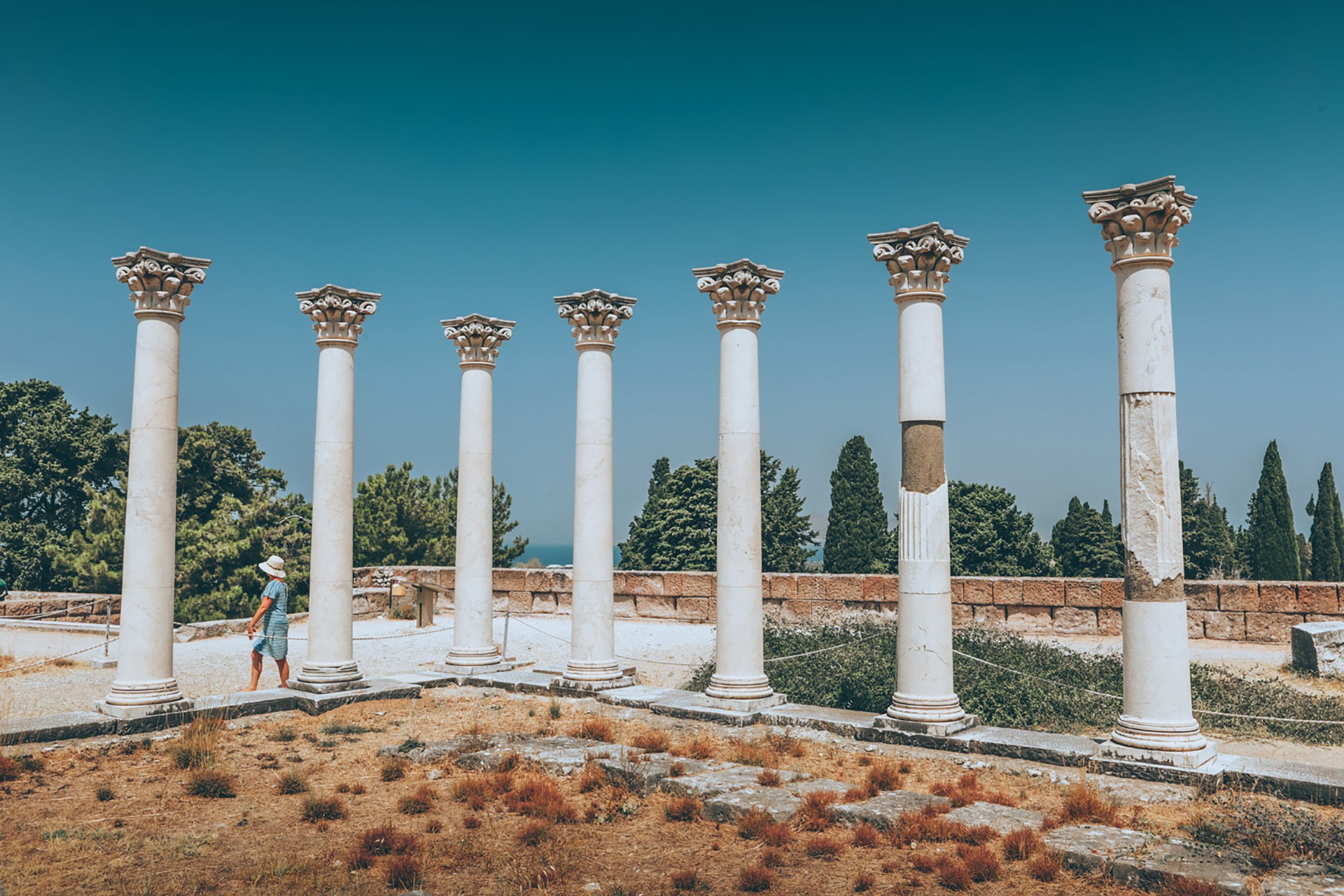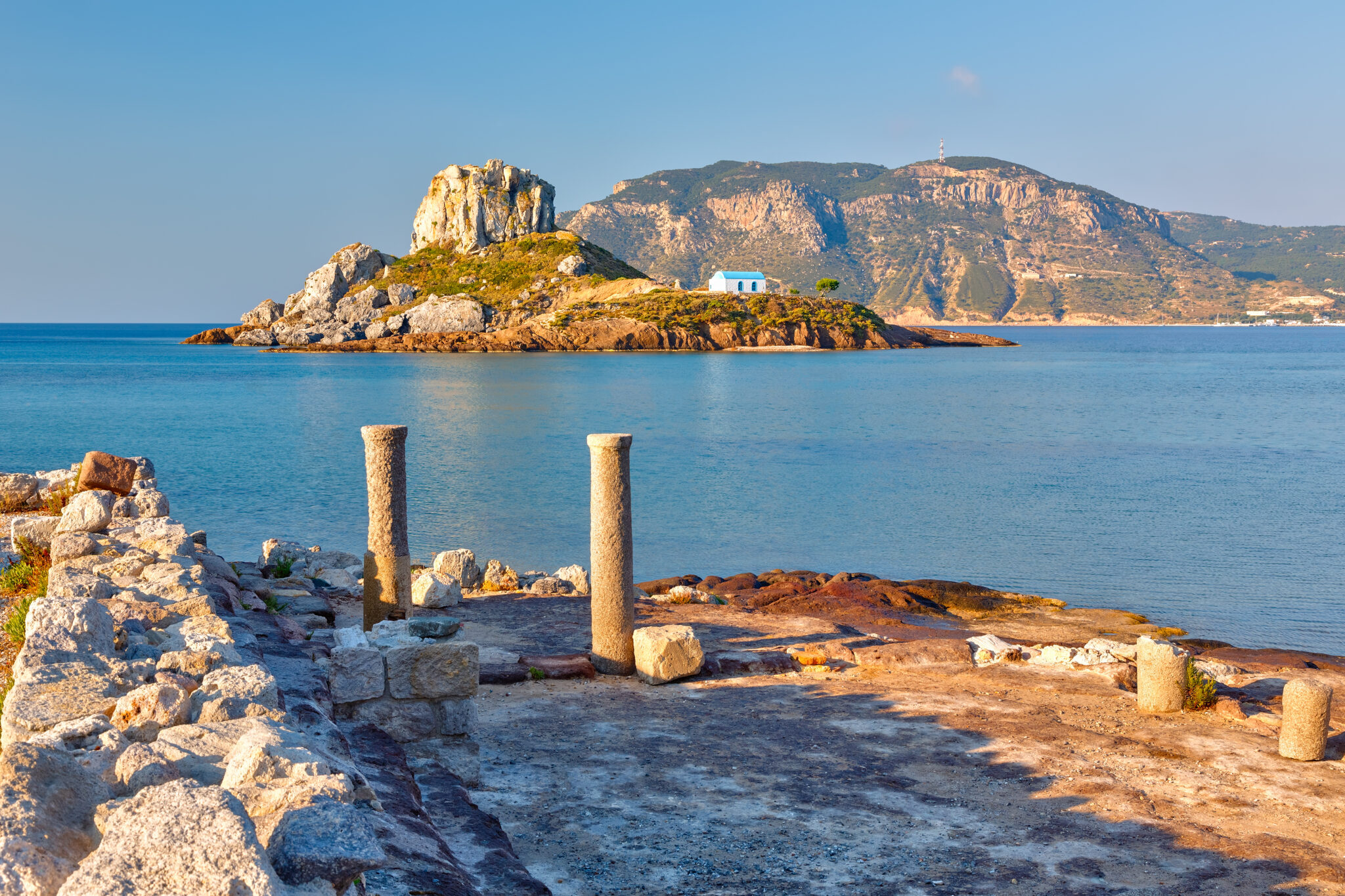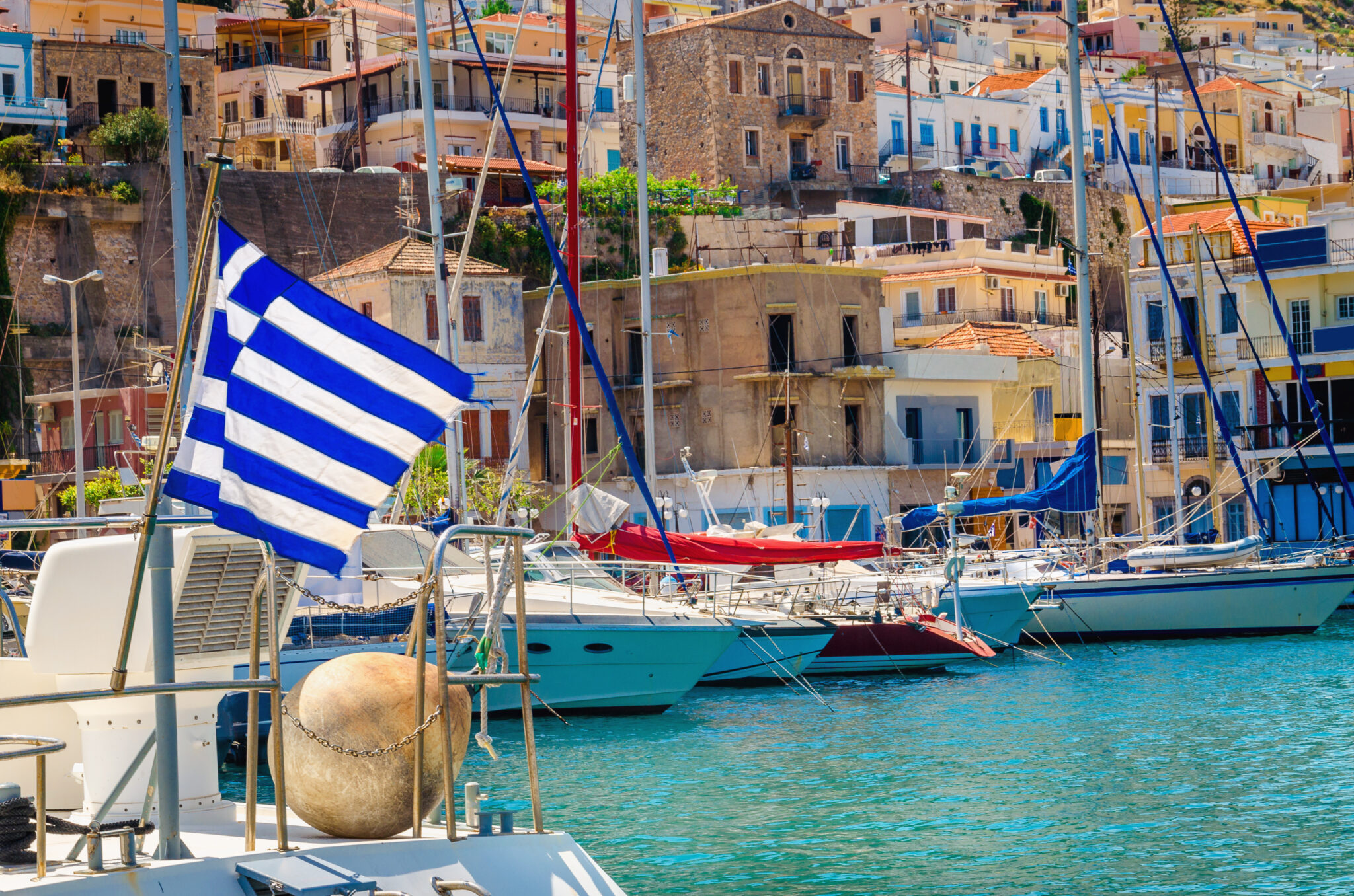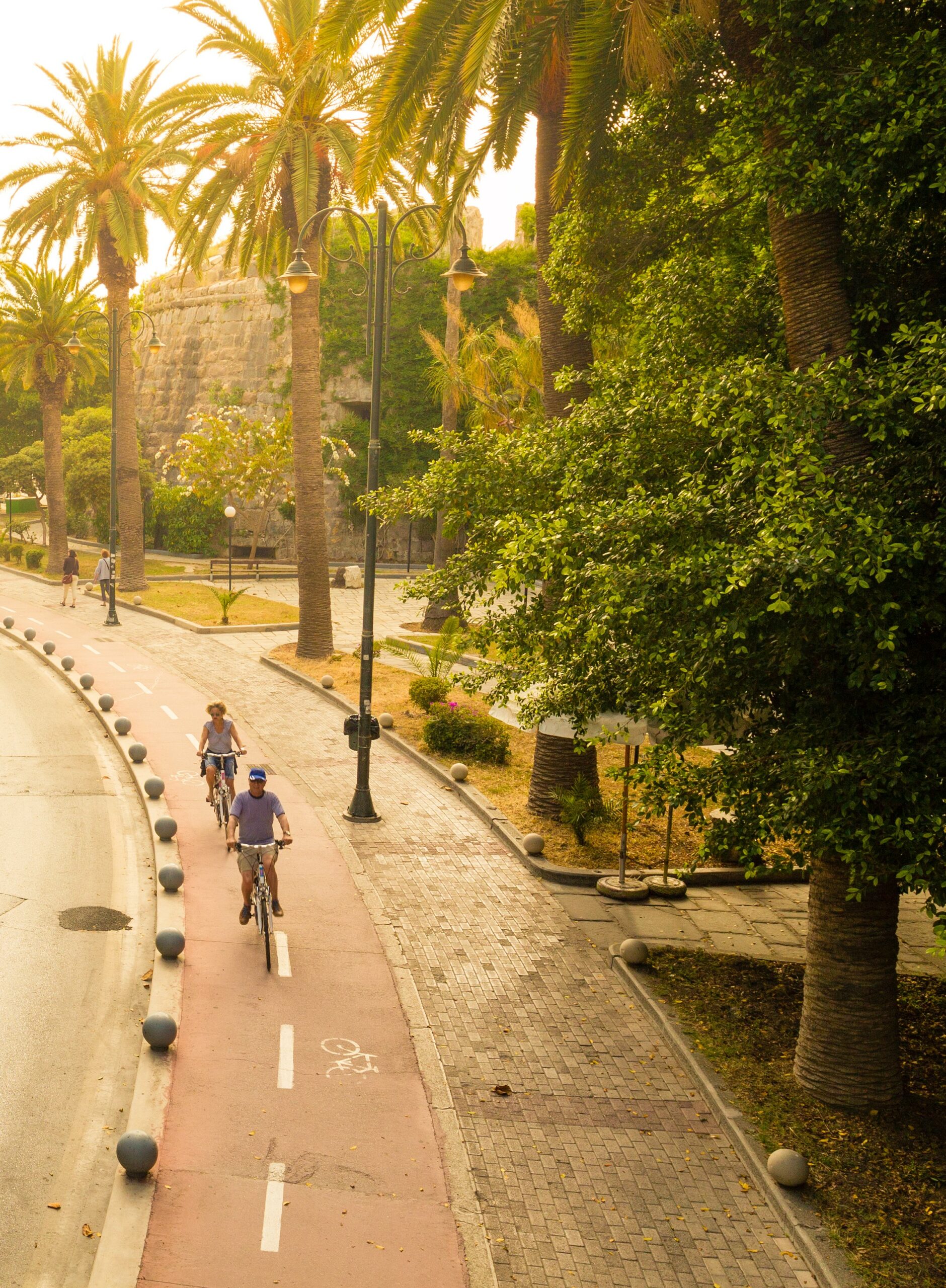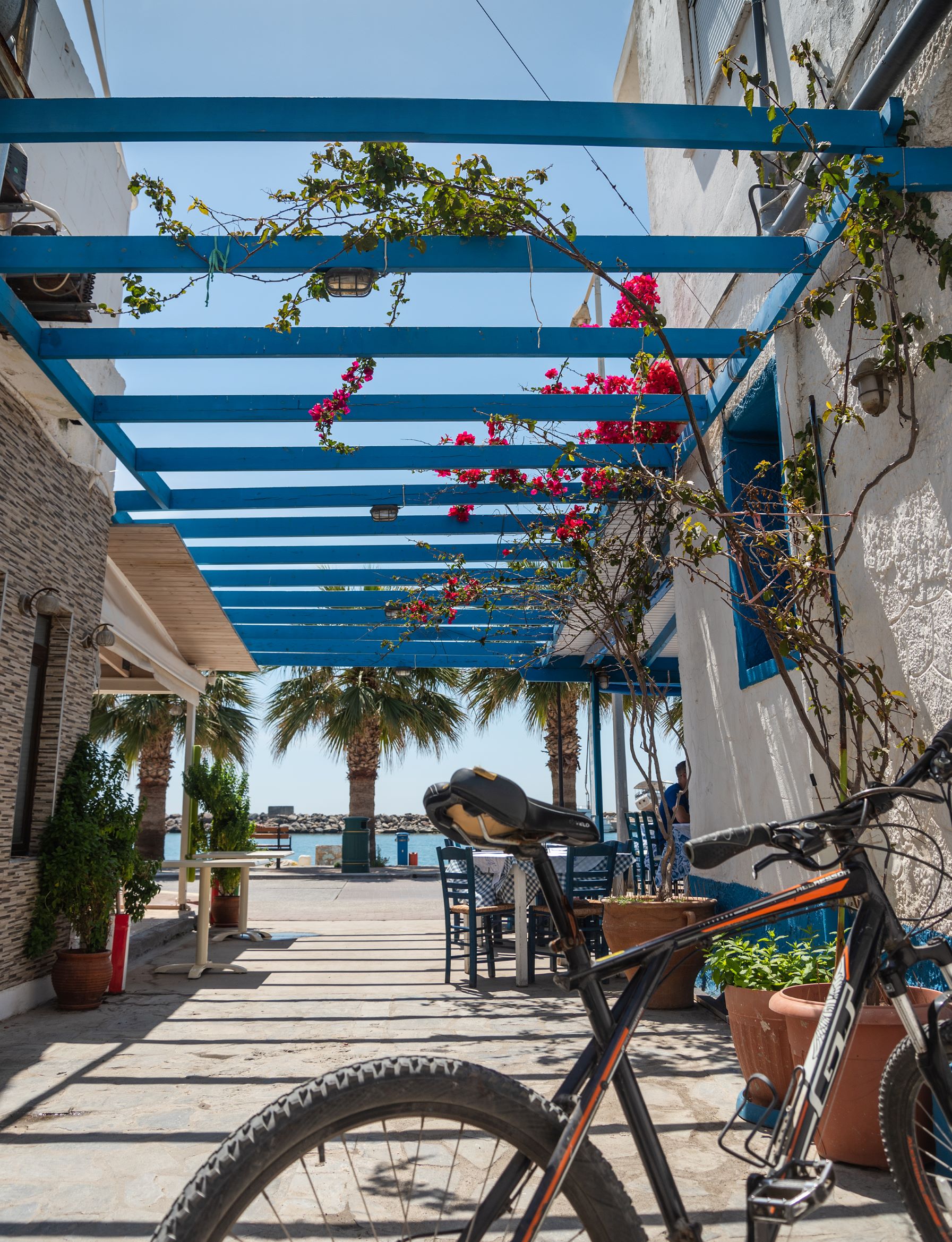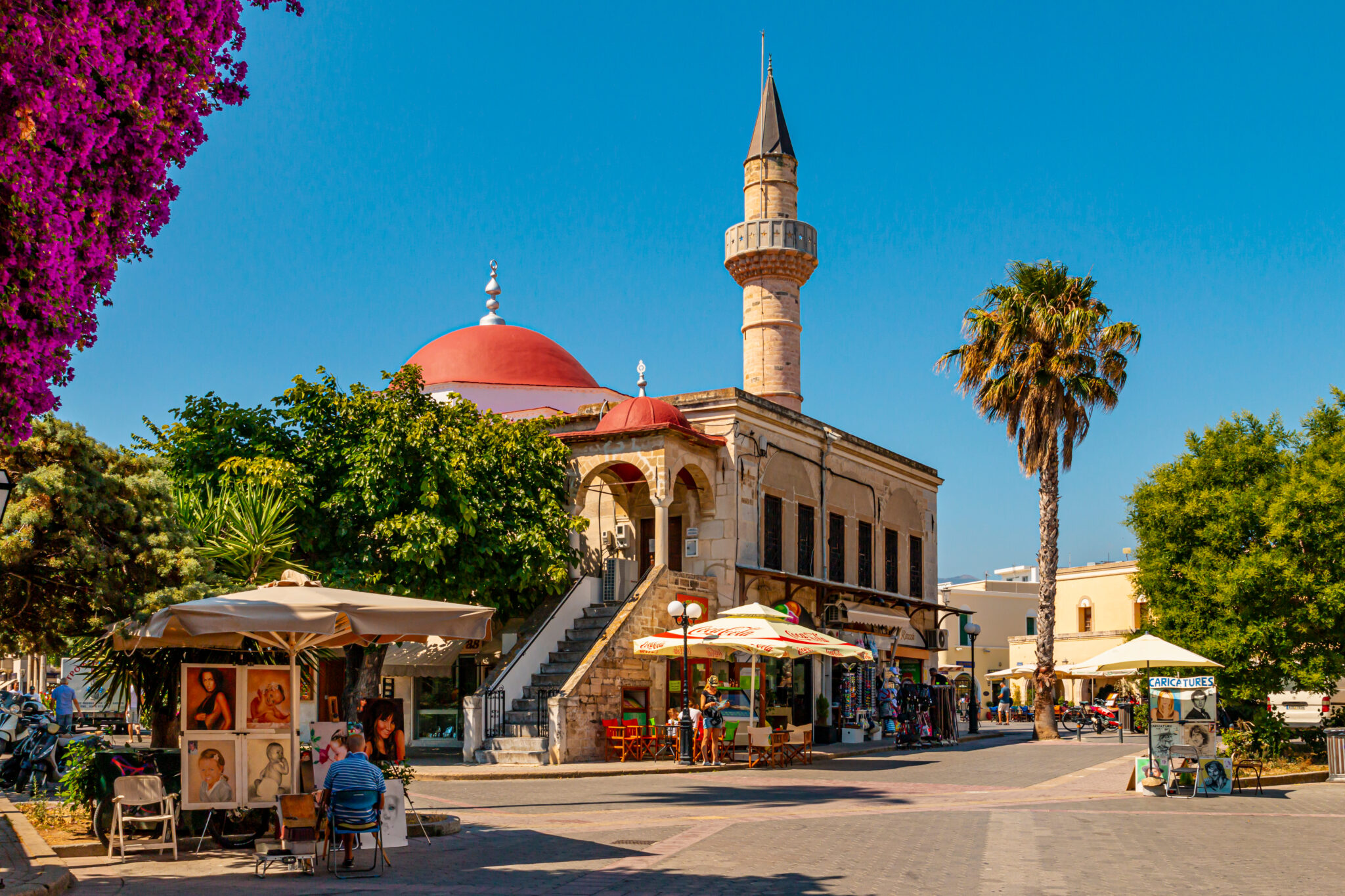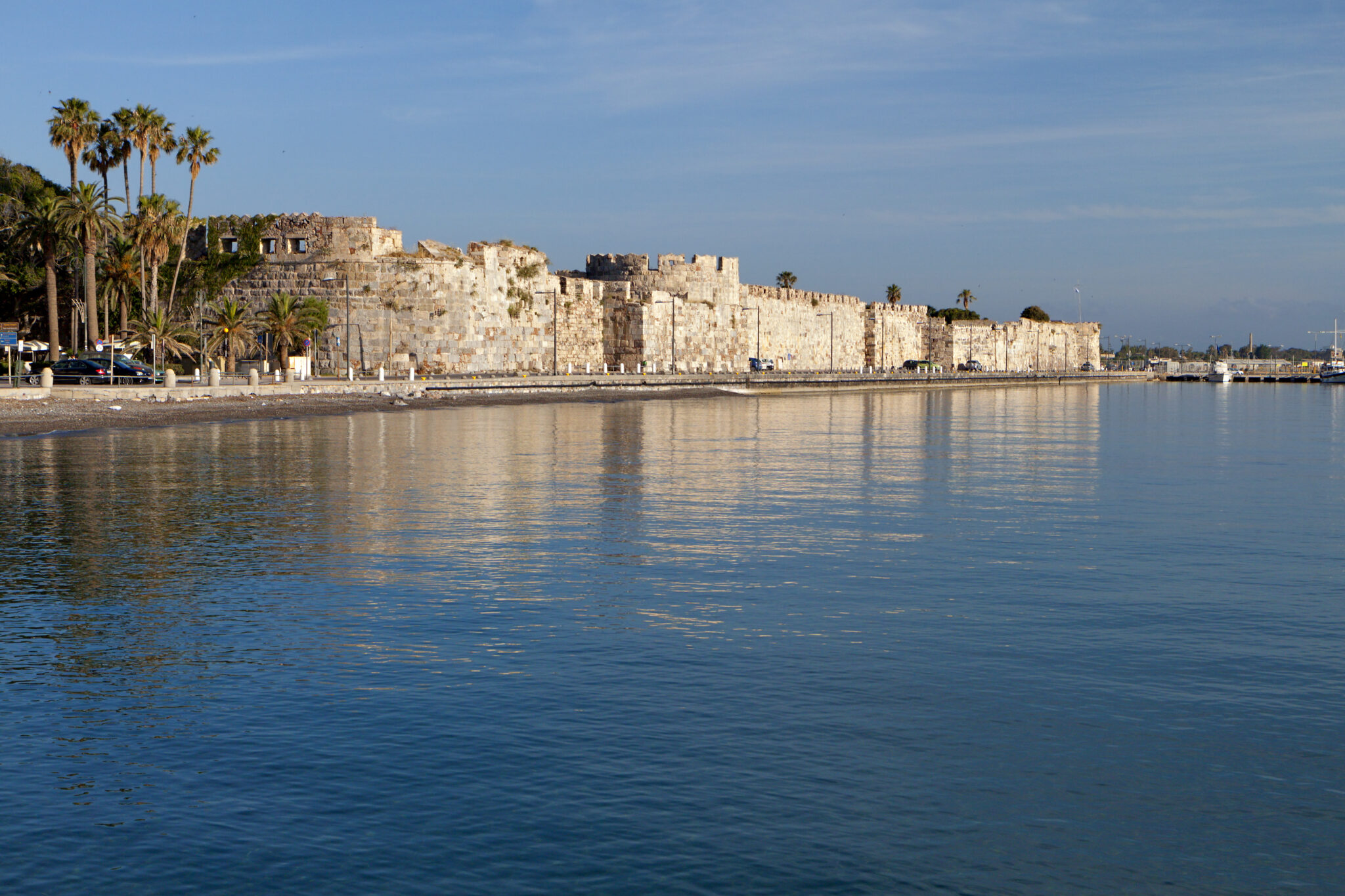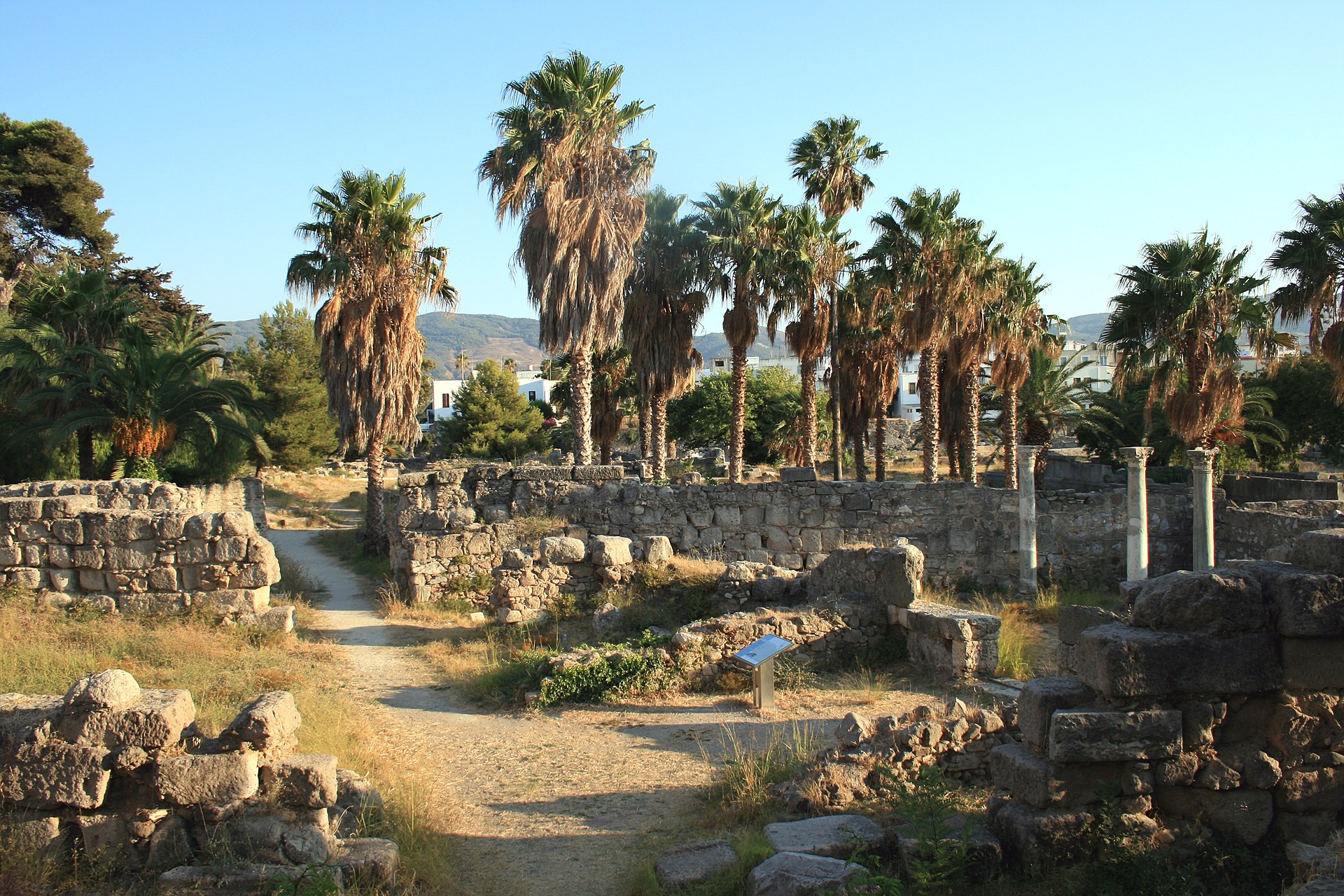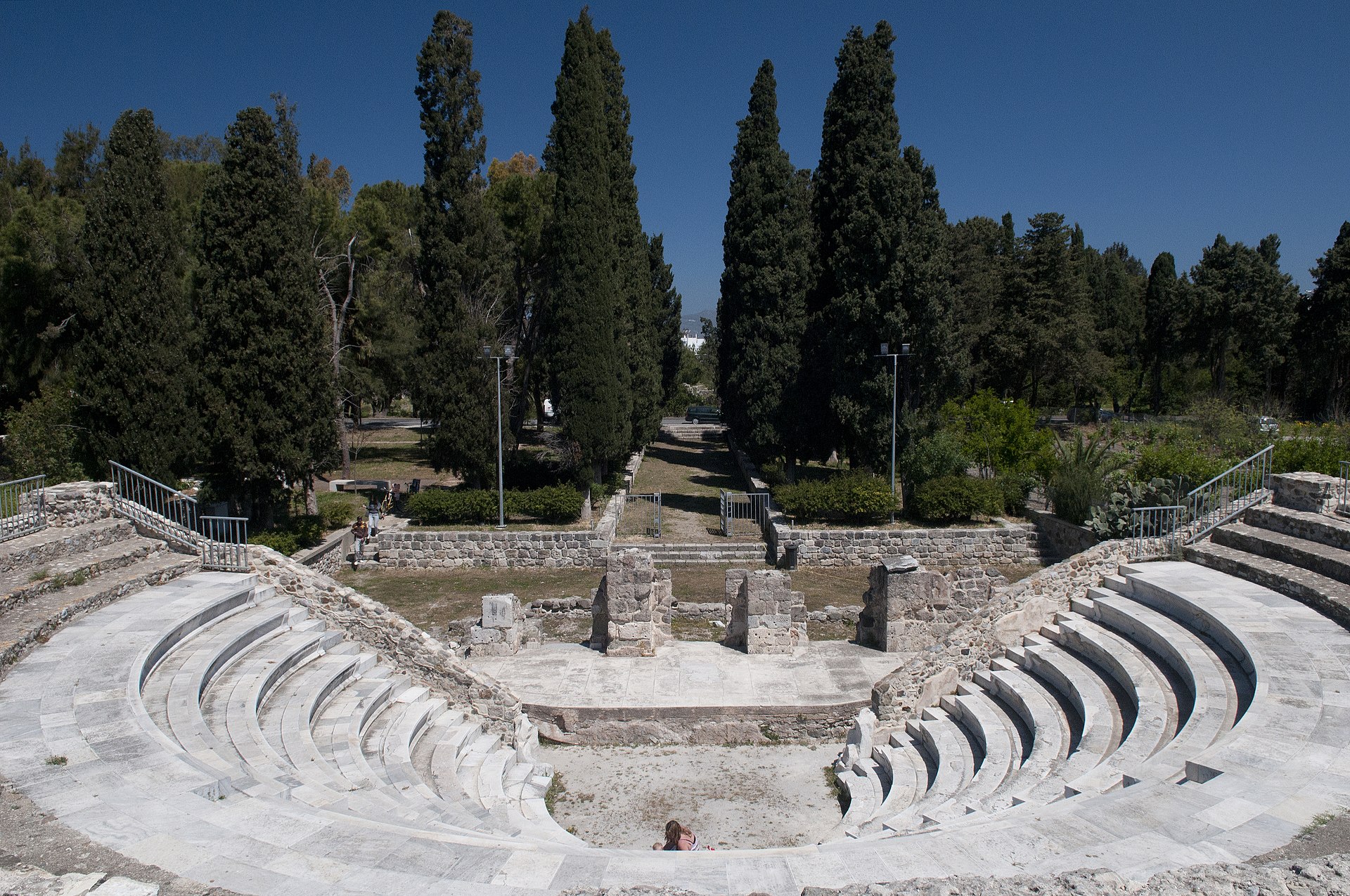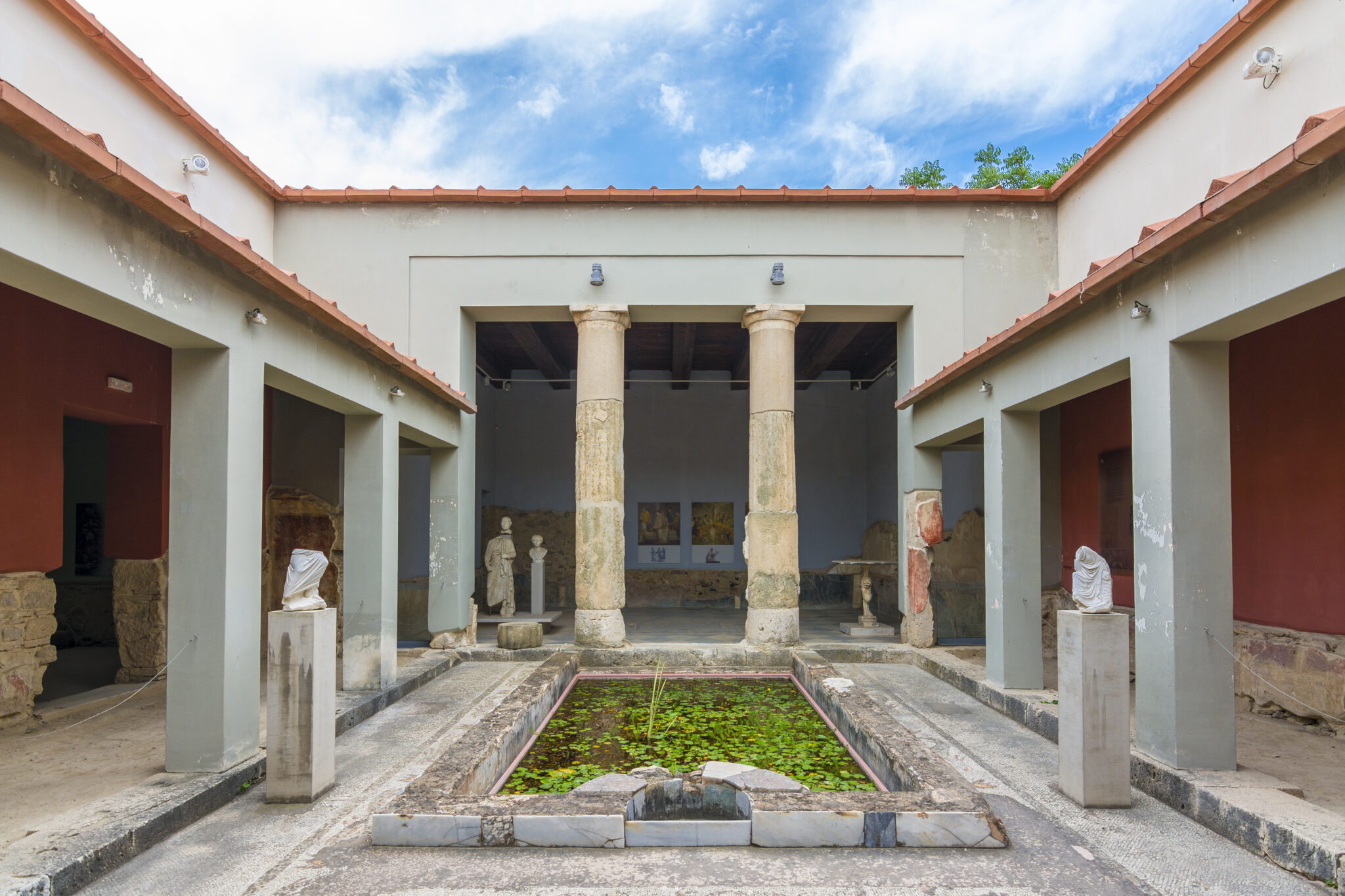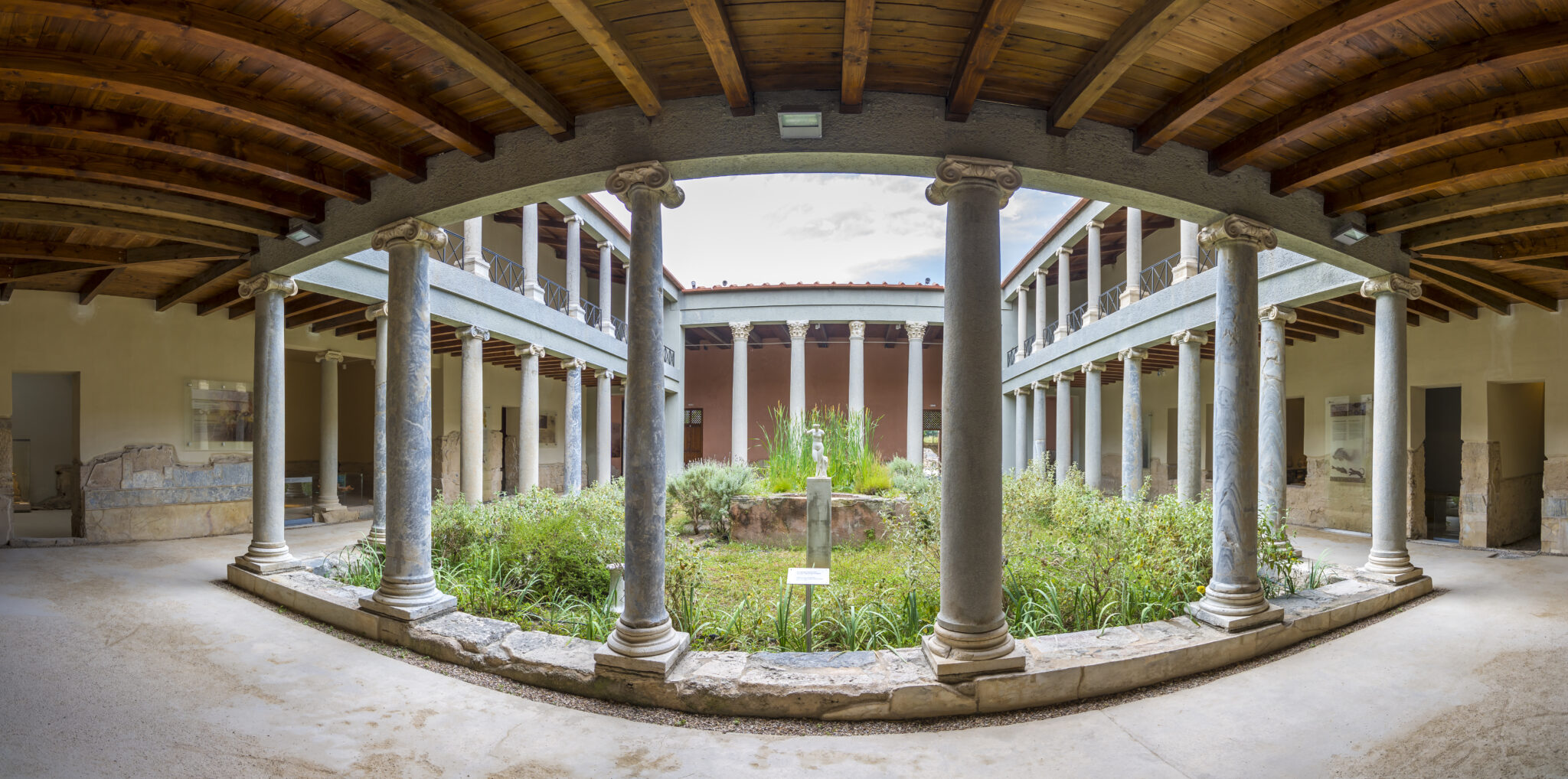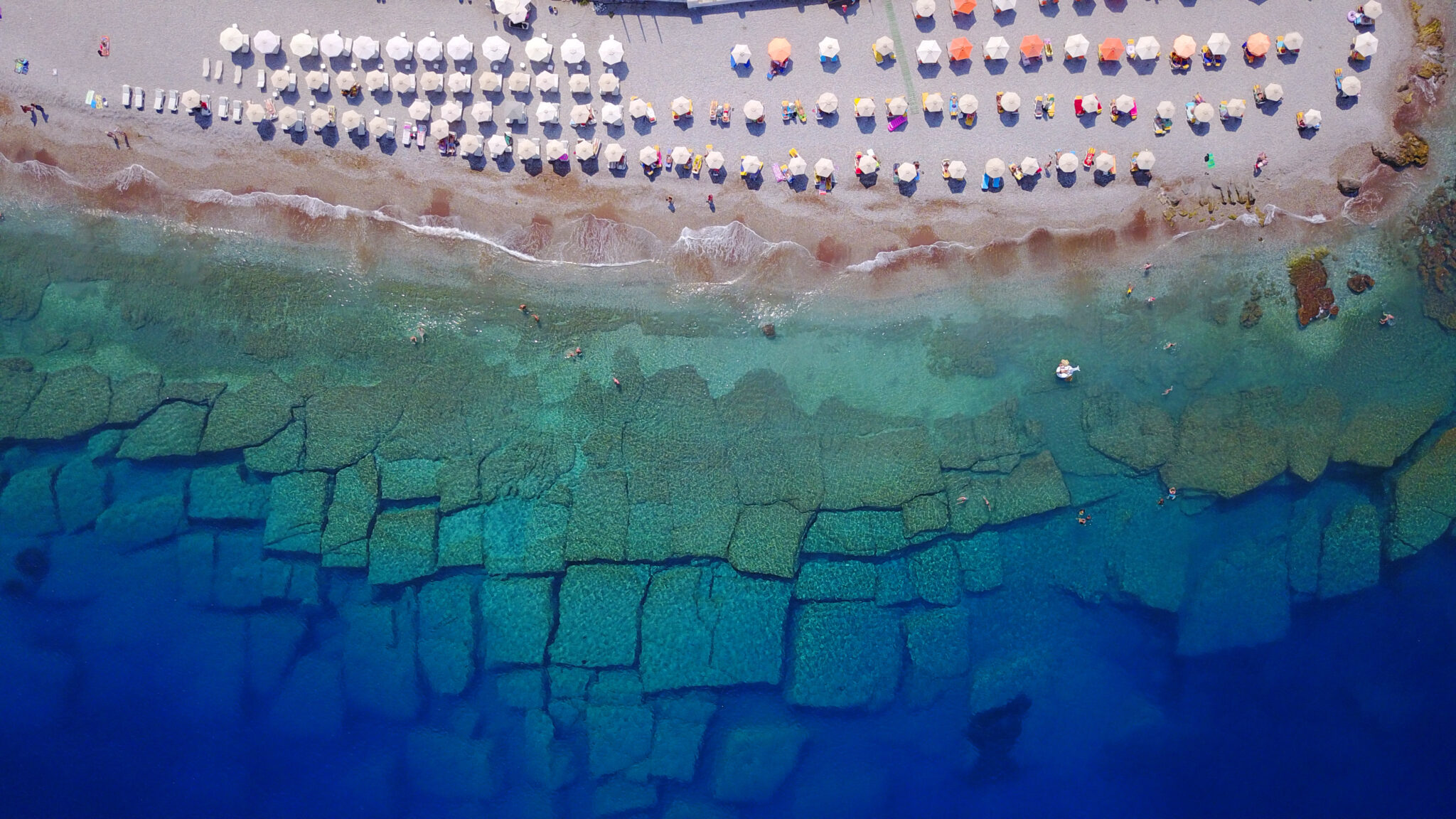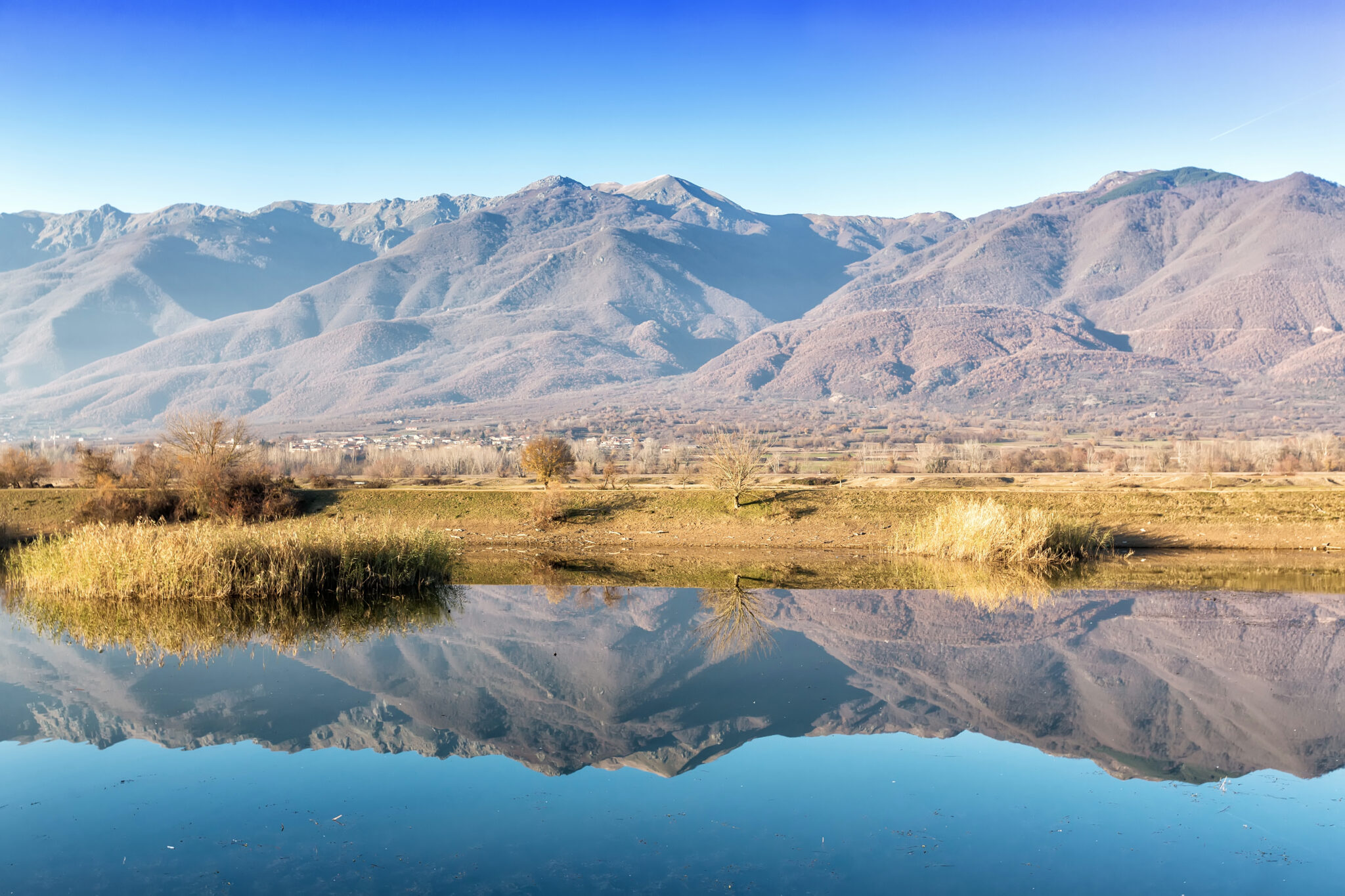The town of Kos is famous for its quirky architecture left behind by the Italians. A rare mix of cultures have passed through the island over the centuries, and the island has been fortunate to have been largely unaffected by times of conflict and changes of power. The ancient monuments of the Knights of the Order of St. John are integrated into the modern city.
Today, Kos town is full of life day and night, with beaches within a few minutes’ walk. There are bicycles everywhere, shady squares, shops, cafes and restaurants, bars, and a state-of-the-art marina.
The great earthquake of 1933, and the destruction it caused, led to the formation of the newer urban plan by the then Italian administration. Italian town-planners and architects created buildings influenced by modernism and eclecticism. They coexist with mediaeval monuments, simple island homes, mosques, apartment buildings and restored ancient buildings. It is truly impressive how much history can be seen in this town without needing to travel far. You will see ancient marbles embedded in mosques, in churches, in the castle, in the parks and in the streets.
Eleftherias Square is the centre of the modern city, surrounded by three imposing buildings – a legacy of the Italians: the Municipal Market, the Club and the Archaeological Museum, which was built in imitation of the Roman baths. At the edge of the square is the Defterdar Mosque. A cobbled street full of bars begins at the Foro Gate, next to the mosque. Alongside it lies the extensive area of the ancient market.
The old city centre is located in Platanos Square (or Loggia Square) one of the most touristy spots. The Loggia Mosque was built in 1786 and its walls are cluttered with pieces of ancient and mediaeval monuments. Directly opposite it stands the Hippocrates’ plane tree.
The port of Kos is full of sailing boats and yachts, and the Kountouriotou Beach which surrounds the bay is always bustling with restaurants, cafés, bars, and shops. The Finikon Street, an extension of the Kountouriotou Coast and the moat of the castle, leads to the Miaouli Coast where you’ll find the mediaeval castle of Nerantzia, a great example of the fortification architecture of the Hippocratic period.
As you’ll quickly discover, cycling is popular. There are many shops at which you can rent a bike to help you get around.
The mediaeval city
The defensive wall was built between 1391-1396 to protect the old town from Ottoman attacks. Part of the south side is visible on Hippocrates Street, where two small, rectangular towers have been preserved. A mound marks the north side of the wall at the site of the Hippocrates’ plane tree. To the west, opposite the Archaeological Museum, is the gate of Foros with a lintel of carved boulder. Inside the old town, pay a visit to the mediaeval churches of Panagia Gorgoepikou, Agios Ioannis the Baptist, Agios Konstantinos and Panagia Katevatis.
The castle of Nerantzia (Hippocrates)
The sturdy mediaeval fortress that dominates the port of Kos is considered one of the most complete of the Knighthood period that began in the Dodecanese In 1315. The Knights of the Order of St. John began building it in 1426 and completed it in 1514. It protected both the town and the harbour. They used local materials and architectural sections from the ancient city – mainly from the Asklepieion. In the first phase of the reconstruction, the inner enclosure was created, which was separated from the outer enclosure by a moat. It has four circular towers at the corners. In the second phase, in 1498, the Knights built the outer castle. When the island was occupied by the Ottomans in 1522, the castle became a garrison barracks. An explosion in 1816 damaged a large part of the castle. In 1912, under Italian rule, the Italian Archaeological Service restored the castle of Nerantzia and demolished sections added by the Ottomans.
The plane tree of Hippocrates
Tradition has it that the tree was planted by Hippocrates (the Father of Medicine), who taught in its shade 2,500 years ago. This is, of course, impossible. However, the tree you see may be a descendant of the original. Experts believe it is around 500 years old. The monumental tree stands upright in spite of time and the laws of nature. The trunk is 9.8m (32 feet) in diameter and it spreads its branches across the square. The marble fountain at its base has an inscription in Arabic letters referring to “Hippocrates‘ water“.
The port and the ancient Agora
A peaceful place, which can provide a calm relief from busy Kos town. The site was uncovered after the earthquakes of 1933, when many of the houses of the old town had to be levelled. The ruins of the Stoa are perhaps the best evidence of the prosperity the area once enjoyed. The building of the 4th or 3rd century BC consists of five consecutive halls and the Sanctuary of Hercules, adjacent to which are floors covered with great mosaics from the 3rd century BC. On the western side of the excavation zone, the Agora (market and meeting place) was one of the largest in antiquity. Its central building dominated the centre of the space which had shops and a monumental entrance. The few surviving columns at the entrance of the ancient port come from a temple dedicated to the goddess Aphrodite.
The Western Archaeological Zone
This is the name used for the whole area opposite the Roman Odeon, a large archaeological park southwest of Limenas. It includes the part of the city that was abandoned during the Knighthood period and came to light with the excavations. Here, you’ll find:
The Roman Odeon
During the summer many events are held here. It was found in relatively good condition during excavations carried out in 1929 by Italian archaeologists, and has been restored. Approached from Gregory V Street opposite the West Zone, archaeologists believe that it may have been built on the site of an earlier public building, perhaps the Bouleuterion, a council assembly building which would have been found in a democratic Greek city state. It was originally a covered building with a capacity of 750, created between the 1st and 2nd centuries for the performance of music.
The Casa Romana
The Casa Romana, a Roman villa constructed in the late 2nd century AD, is a notable structure. Its discovery was preceded by a tragic event, as the town was almost completely destroyed in a 1933 earthquake. Realizing that ancient buildings and monuments were buried beneath the rubble, Italian authorities conducted extensive excavations, resulting in the discovery of this magnificent mansion. In 1940, the Casa Romana underwent full restoration.
At first sight, the exterior of the building may not prepare one for the stunning interior, featuring 36 rooms adorned with ornate objects and beautiful mosaics on its floors. The first two mosaics have themes from the animal and marine kingdoms. The third is pebbled in a Rhodian style and was flanked by a double peristyle (columned area/porch). The grand layout of the villa exudes a sense of grandeur, as if one has been transported back to the glory days of the Roman Empire.
Read also
Consumate Kos Island: Bars and Cafes in Kos Town



